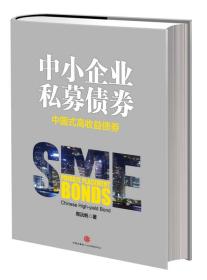
英语词汇学教程(第4版外语语言文学系列教材)
¥ 14.18 3.6折 ¥ 39.5 九品
仅1件
北京昌平
认证卖家担保交易快速发货售后保障
作者张维友 编
出版社华中师范大学出版社
出版时间2022-01
版次1
装帧平装
货号A3
上书时间2024-12-03
- 在售商品 暂无
- 平均发货时间 16小时
- 好评率 暂无
- 最新上架
商品详情
- 品相描述:九品
图书标准信息
- 作者 张维友 编
- 出版社 华中师范大学出版社
- 出版时间 2022-01
- 版次 1
- ISBN 9787562296386
- 定价 39.50元
- 装帧 平装
- 开本 16开
- 页数 264页
- 字数 99999千字
- 【内容简介】
- 《英语词汇学教程》是笔者在多年的教学实践基础上整理而成的。本书在保留词汇学传统的知识结构基础上,尽可能融进本学科新的研究成果,着力反映词汇的新发展,并首次引进了篇章词汇语义学的内容。本书的着眼点在于实用,因此,理论上阐述深入浅出,删繁就简,同时博采例证,提供丰富的素材。该书配备了相当数量的练习题和思考题,以便巩固学习内容,让学生学以致用。
- 【目录】
-
Chapter 1 Basic Concepts of Words and Vocabulary
1.1 The Definition of a Word
1.2 Vocabulary
1.3 Sound and Meaning
1.4 Sound and Form
1.5 Classification of Words
1.5.1 Basic Vocabulary and Non-basic Vocabulary
1.5.2 Content Words and Functional Words
1.5.3 Native Words and Borrowed Words
Chapter 2 The Development of the English Vocabulary
2.1 The Indo-European Language Family
2.2 Three Phases of the Vocabulary Development
2.2.1 Old English (450-1150)
2.2.2 Middle English (1150-1500)
2.2.3 Modern English (1500 up to the present)
2.3 General Characteristics
2.3.1 Receptivity, Adaptability and Heterogeneity
2.3.2 Simplicity of Inflection
2.3.3 Relatively Fixed Word Order
2.4 Foreign Elements in the English Vocabulary
2.4.1 Major Foreign Elements
2.4.2 Minor Foreign Elements
2.5 Growth of Contemporary English Vocabulary
2.6 Modes of Vocabulary Development
2.6.1 Creation
2.6.2 Semantic Change
2.6.3 Borrowing
Chapter 3 Morphological Structure of English Words
3.1 Morphemes
3.2 Morphs and Allomorphs
3.3 Classifying Morphemes
3.3.1 Free and Bound Morphemes
3.3.2 Derivational and Inflectional Morphemes
3.3 . 3 Content and Grammatical Morphemes
3.4 Identifying Morphemes
3.5 Morphemization and New Morphemes
3.6 Morpheme and Word Formation
3.6.1 Affix
3.6.2 Root, Stem, Base
Chapter 4 Word Formation
4.1 Affixation
4.1.1 Prefixation
4.1.2 Suffixation
4.2 Compounding
4.2.1 Characteristics of Compounds
4.2.2 Formation of Compounds
4.3 Conversion
4.3.1 Conversion to Nouns
4.3.2 Conversion to Verbs
4.3.3 Conversion to Adjectives
4.3.4 Changes Involved in Conversion
4.4 Blending
4.5 Clipping
4.6 Acronymy
4.6.1 Initialisms (alphabetisms)
4.6.2 Acronyms
4.7 Back-formation
4.8 Sound Reduplication
4.9 Commonization of Proper Names
4.9.1 Words from Proper Names
4.9.2 Morphological Processing
4.9.3 Use of Commonized Words
Chapter 5 Word Meaning and Componential Analysis
5.1 Word Meaning
5.1.1 Reference
5.1.2 Concept
5.1.3 Sense
5.2 Motivation
5.2.1 Onomatopoeic Motivation
5.2.2 Morphological Motivation
5.2.3 Semantic Motivation
5.2.4 Etymological Motivation
5.3 Types of Meaning
5.3.1 Grammatical Meaning
5.3.2 Lexical Meaning
5.4 Componential Analysis
Chapter 6 Sense Relations
6.1 Polysemy
6.1.1 Two Approaches to Polysemy
6.1.2 Two Processes of Development
6.2 Homonymy
6.2.1 Types of Homonyms
6.2.2 Origins of Homonyms
6.2.3 Differentiation of Homonyms from Polysemants
6.2.4 Rhetoric Features of Homonyms
6.3 Synonymy
6.3.1 Definition of Synonyms
6.3.2 Types of Synonyms
6.3.3 Sources of Synonyms
6.3.4 Discrimination of Synonyms
6.4 Antonymy
6.4.1 Three Types of Antonyms
6.4.2 Characteristics of Antonyms
6.4.3 The Use of Antonyms
6.5 Hyponymy
6.6 Semantic Field
Chapter 7 Changes in Word Meaning
7.1 Types of Change
7.1.1 Extension of Meaning
7.1.2 Narrowing of Meaning
7.1.3 Elevation of Meaning
7.1.4 Degradation of Meaning
7.1.5 Transfer of Meaning
7.2 Mechanism of Change
7.3 Causes of Change
7.3.1 Extra-linguistic Factors
7.3.2 Linguistic Factors
Chapter 8 Meaning and Context
8.1 Types of Context
8.1.1 Extra-linguistic Context
8.1.2 Linguistic Context
8.2 The Role of Context
8.2.1 Elimination of Ambiguity
8.2.2 Indication of Referents
8.2.3 Provision of Clues for Inferring Word Meaning
Chapter 9 English Idioms
9.1 Characteristics of Idioms
9.1.1 Semantic Unity
9.1.2 Structural Stability
9.1.3 Idiomaticity
9.2 Classification of Idioms
9.2.1 Noun Idioms
9
点击展开
点击收起
— 没有更多了 —












以下为对购买帮助不大的评价